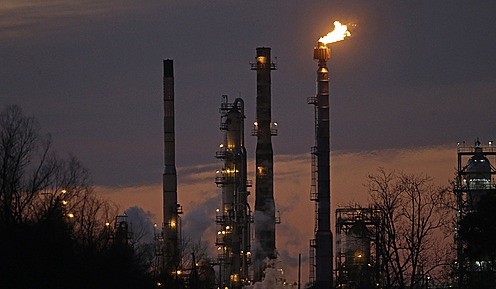
[Special Economy=Eunji Kim]Due to OPEC failing to agree on crude oil production cuts at a conference last November, oil prices are continuing to plunge.
On Monday, the world oil price, which looks at the West Texas Intermediate(WTI) as its standard, dived 8% in two months—a substantial amount when it comes to oil prices.
There was a prediction that because of France deploying air strikes in Syria, where there is oil supply, these prices will rise, but that did not seem to be the case, along with the continuation of high oil stockpiles.
In June of last year, WTI, by contrast, rose $107 per barrel and Brent crude oil price skyrocketed to $114. However, again due to oversupply, the trend switched downwards as the Brent price tumbled $40 last November, going as far as recording at $70.
Furthermore, sanctions placed on Iran, another oil-producing country, will be lifted soon and that means OPEC's daily production will increase more than the current 31 million and five hundred-thousand barrels produced per day.
The problem is Europe and China's volatile economic situation will cause the global demand for oil to fall, further causing oil prices to dip even more.
One consultant at Caprock Risk Management, a firm that provides services to the US. energy and commodity markets, said WTI can even dive to $32.
Another reason OPEC is not agreeing to cut its production is its desire to win at a "chicken game" played with the U.S. oil shale industry.
The shale oil price is more expensive than OPEC's crude oil prices, so if the latter does not cut its production, its exports will be, in part, higher in demand compared to its competition.
As a result, the U.S. oil shale industry can go bankrupt—at least, that is OPEC's supposed plan.

